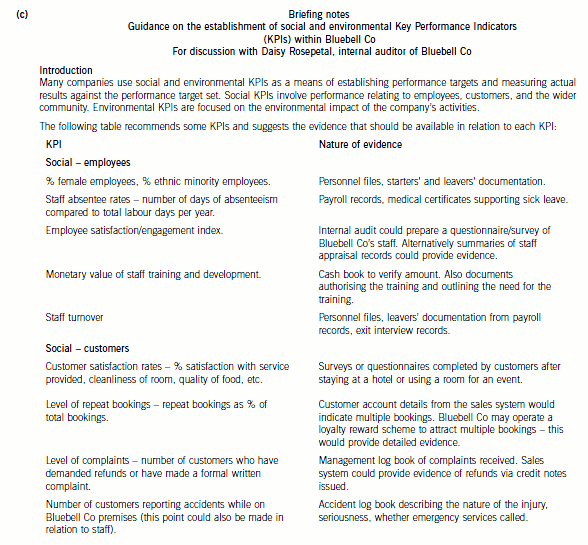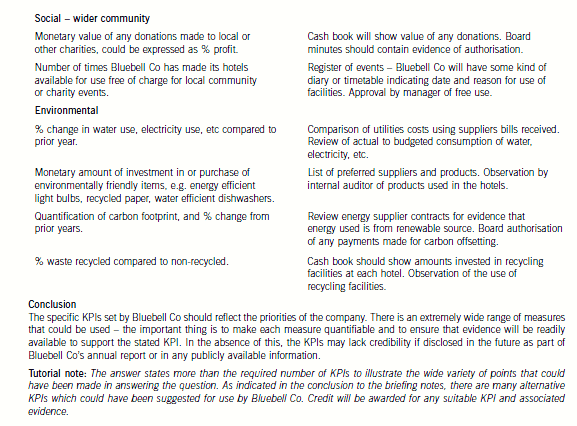ACCA科目免考时需要注意哪些事项?一起来看详细内容!
发布时间:2020-04-20
在申请ACCA科目免考时需要注意哪些东西?51题库考试学习网今天来给大家汇总了申请ACCA免考的几大注意事项,以供各位备考的小伙伴们参考:
1、在校生只有顺利通过整学年的课程才能够申请免试。
2、针对在校生的部分课程免试政策只适用于会计学专业全日制大学本科的在读学生,而不适用于硕士学位或大专学历的在读学生。
3、已完成MPAcc学位大纲规定课程,还需完成论文的学员也可注册并申请免试。
4、须提交由学校出具的通过所有MPAcc学位大纲规定课程的成绩单,并附注“该学员已通过所有MPAcc学位大纲规定课程,论文待完成”的说明。
5、特许学位—部分完成时不能申请免试。
6、政策适用于在中国教育部认可的高等院校全部完成或部分完成本科课程的学生,而不考虑目前居住地点。
7、欲申请牛津布鲁克斯大学学士学位的学员需放弃FR、AA及FM科目的免试。
2020年ACCA免考政策:教育部认可高校毕业生会计学专业,获得学士学位或硕士学位免试5门课程会计学,辅修专业免试3门课程法律专业免试1门课程,商务及管理专业免试1门课程MPAcc专业免试5门课程。
注:部分院校的MPAcc专业已专门申请ACCA总部的免试审核,因此有多于5门的免试,具体请查询ACCA总部官网:
学位获得MBA学位免试3门课程教育部认可高校在校生会计学,专业完成第一学年课程可以注册为ACCA正式学员,无免试会计学专业完成第二学年课程免试3门课程其他专业,在校生登录ACCA全球网站。
取得ACCA证书后的就业优势:
1、ACCA会员资格在国际上得到广泛认可,尤其得到欧盟立法以及许多国家公司法的承认。所以,拥有ACCA会员资格,就拥有了在世界各地就业的"通行证"。
2、ACCA的课程就是根据现时商务社会对财会人员的实际要求进行开发、设计的,特别注意培养学员的分析能力和在复杂条件下的决策、判断能力。系统的、高质量的培训给予学员真才实学,学员学成后能适应各种环境,并逐步成为具有全面管理素质的高级财务管理专家。
3、ACCA会员可在工商企业财务部门、审计/会计师事务所、金融机构和财政、税务部门从事财务和财务管理工作。很多会员在世界各地大公司担任高级职位(财务经理、财务总监CFO,甚至总裁CEO)。
好的,今天51题库考试学习网分享了关于ACCA考试的相关问题,相信大家看完以上内容都会觉得豁然开朗了。想了解更多考试相关资讯的小伙伴们请及时关注51题库考试学习网!51题库考试学习网希望各位小伙伴都能顺利通过考试,早日取证!下面小编为大家准备了 ACCA考试 的相关考题,供大家学习参考。
(b) Describe five main barriers to an effective appraisal interview. (10 marks)
(b) The appraisal system should be well constructed and fair to both the individual and the organisation. However, there are a number of barriers, often because employees see the appraisal as one or more of the following:
Confrontation due to lack of agreement on performance, badly explained or subjective feedback, performance based on recent events or disagreement on longer term activities.
Judgement, the appraisal is seen as a one sided process based entirely on the manager’s perspective.
Chat is the worst of all worlds. The appraisal interview is seen as an informal, loosely constructed and badly managed conversation without purpose.
Unfinished business is when the appraisal is not seen as part of a continuing process of performance management.
An annual event when the appraisal is seen as largely irrelevant and simply an event to set annual targets that quickly become out of date.
A system of bureaucracy based on forms devised solely to satisfy the organisation’s human resources department so that its main purpose, that of identifying individual and organisation performance and improvement, is forgotten.
A new internal auditor, Daisy Rosepetal, has recently joined Bluebell Co. She has been asked by management to
establish and to monitor a variety of social and environmental Key Performance Indicators (KPIs). Daisy has no
experience in this area, and has asked you for some advice. It has been agreed with Bluebell Co’s audit committee
that you are to provide guidance to Daisy to help her in this part of her role, and that this does not impair the
objectivity of the audit.
(c) Recommend EIGHT KPIs which could be used to monitor Bluebell Co’s social and environmental
performance, and outline the nature of evidence that should be available to provide assurance on the
accuracy of the KPIs recommended. Your answer should be in the form. of briefing notes to be used at a
meeting with Daisy Rosepetal. (10 marks)
Note: requirement (c) includes 2 professional marks.


(b) Discuss the view that fair value is a more relevant measure to use in corporate reporting than historical cost.
(12 marks)
(b) The main disagreement over a shift to fair value measurement is the debate over relevance versus reliability. It is argued that
historical cost financial statements are not relevant because they do not provide information about current exchange values
for the entity’s assets which to some extent determine the value of the shares of the entity. However, the information provided
by fair values may be unreliable because it may not be based on arm’s-length transactions. Proponents of fair value
accounting argue that this measurement is more relevant to decision makers even if it is less reliable and would produce
balance sheets that are more representative of a company’s value. However it can be argued that relevant information that is
unreliable is of no use to an investor. One advantage of historical cost financial information is that it produces earnings
numbers that are not based on appraisals or other valuation techniques. Therefore, the income statement is less likely to be
subject to manipulation by management. In addition, historical cost balance sheet figures comprise actual purchase prices,
not estimates of current values that can be altered to improve various financial ratios. Because historical cost statements rely
less on estimates and more on ‘hard’ numbers, it can be said that historical cost financial statements are more reliable than
fair value financial statements. Furthermore, fair value measurements may be less reliable than historical costs measures
because fair value accounting provides management with the opportunity to manipulate the reported profit for the period.
Developing reliable methods of measuring fair value so that investors trust the information reported in financial statements is
critical.
Fair value measurement could be said to be more relevant than historical cost as it is based on market values and not entity
specific measurement on initial recognition, so long as fair values can be reliably measured. Generally the fair value of the
consideration given or received (effectively historical cost) also represents the fair value of the item at the date of initial
recognition. However there are many cases where significant differences between historical cost and fair value can arise on
initial recognition.
Historical cost does not purport to measure the value received. It cannot be assumed that the price paid can be recovered in
the market place. Hence the need for some additional measure of recoverable value and impairment testing of assets.
Historical cost can be an entity specific measurement. The recorded historical cost can be lower or higher than its fair value.
For example the valuation of inventory is determined by the costing method adopted by the entity and this can vary from
entity to entity. Historical cost often requires the allocation of costs to an asset or liability. These costs are attributed to assets,
liabilities and expenses, and are often allocated arbitrarily. An example of this is self constructed assets. Rules set out in
accounting standards help produce some consistency of historical cost measurements but such rules cannot improve
representational faithfulness.
Another problem with historical cost arises as regards costs incurred prior to an asset being recognised. Historical costs
recorded from development expenditure cannot be capitalised if they are incurred prior to the asset meeting the recognition
criteria in IAS38 ‘Intangible Assets’. Thus the historical cost amount does not represent the fair value of the consideration
given to create the asset.
The relevance of historical cost has traditionally been based on a cost/revenue matching principle. The objective has been to
expense the cost of the asset when the revenue to which the asset has contributed is recognised. If the historical cost of the
asset differs from its fair value on initial recognition then the matching process in future periods becomes arbitrary. The
measurement of assets at fair value will enhance the matching objective. Historical cost may have use in predicting future
net reported income but does not have any necessary implications for future cash flows. Fair value does embody the market’s
expectations for those future cash flows.
However, historical cost is grounded in actual transaction amounts and has existed for many years to the extent that it is
supported by practical experience and familiarity. Historical cost is accepted as a reliable measure especially where no other
relevant measurement basis can be applied.
声明:本文内容由互联网用户自发贡献自行上传,本网站不拥有所有权,未作人工编辑处理,也不承担相关法律责任。如果您发现有涉嫌版权的内容,欢迎发送邮件至:contact@51tk.com 进行举报,并提供相关证据,工作人员会在5个工作日内联系你,一经查实,本站将立刻删除涉嫌侵权内容。
- 2020-01-07
- 2020-01-09
- 2020-05-09
- 2020-05-14
- 2020-03-21
- 2020-01-09
- 2020-01-09
- 2020-01-09
- 2020-01-04
- 2020-05-02
- 2020-01-09
- 2020-01-09
- 2020-05-09
- 2020-01-09
- 2020-01-09
- 2020-02-28
- 2020-02-01
- 2019-07-19
- 2020-01-09
- 2020-01-09
- 2020-05-09
- 2020-03-05
- 2020-03-15
- 2020-04-10
- 2020-05-15
- 2019-10-03
- 2020-01-09
- 2020-03-28
- 2020-02-20
- 2020-01-31